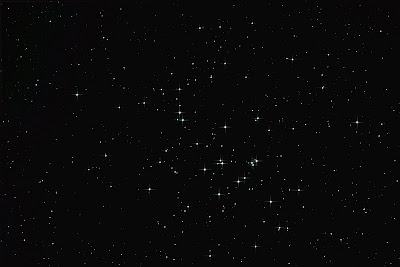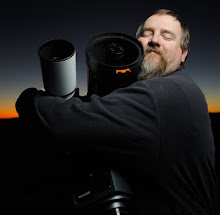The Associated Press writes today, "Scientists plan to put one of the twin Mars rovers to sleep and limit the activities of the other robot to fulfill a NASA order to cut $4 million from the program's budget, mission team members said Monday."
The story continues, "Both rovers were originally planned for three-month missions at a cost of $820 million, but are now in their fourth year of exploration. It costs NASA about $20 million annually to keep the rovers running."
Remember that number: $20 million a year.
Meanwhile, MSNBC is reporting on the nonpartisan Congressional Budget Office's report on the cost of the wars in Iraq and Afghanistan. "The Pentagon is spending about $6 billion a month on the war in Iraq, or about $200 million a day, according to the CBO."
Two. Hundred. Million. Dollars. A day.
That means in just under two and a half hours, the Pentagon has spent the entire annual budget for the Mars Exploration Rovers. What a waste.
What a senseless, stupid, fucking waste.
Monday, March 24, 2008
Wednesday, March 19, 2008
Just For Comparison
Project Apollo:
Cost (in 2006 dollars): $135 billion
Lives Lost: 3 (Apollo 1: Grissom, White & Chaffee)
Operation Iraqi Freedom:
Cost: $406 billion (White House estimate through 12/07)
Lives Lost: 3998 US Military fatalities (as of 3/17/08), 82,249 – 89,760 Iraqi civilian deaths (as of 2/16/08)
Cost (in 2006 dollars): $135 billion
Lives Lost: 3 (Apollo 1: Grissom, White & Chaffee)
Operation Iraqi Freedom:
Cost: $406 billion (White House estimate through 12/07)
Lives Lost: 3998 US Military fatalities (as of 3/17/08), 82,249 – 89,760 Iraqi civilian deaths (as of 2/16/08)
Monday, March 17, 2008
Montes Apenninus, Montes Caucasus & Montes Alpes

I didn't really set out to make this mosaic--it just sort of happened. Could have used one more frame on the southern end, but oh well. 12,500 frames total. 10" LX200 @ f/10.
Rima Hadley (Apollo 15) is just visible near the northern end of the Apennines. The rille in Vallis Alpes is almost there; I'm not convinced it's not a processing artifact.
Sunday, March 16, 2008
Rupes Recta, The Straight Wall

9-day-old moon. Ran off 2500 frames with the DMK21AF04/green filter in the 10" LX200 @ f/10 in lousy 2/5 seeing. Used 15 alignment points in Registax. NO WAVELETS. Brought the stacked image over to Lynkeos 2 on the Mac and ran 40 iterations of Richardson-Lucy deconvolution, and then a mild unsharp mask. Levels adjusted in Photoshop.
First time I've tried RL deconvolution--I like it. Very smooth.
Info from Wikipedia:
Rupes Recta is a linear fault on the Moon, in the southeastern part of the Mare Nubium at 22.1° S 7.8° W. The name is latin for "Straight Fault", although it is more commonly called the Straight Wall. This is the most well-known escarpment feature on the Moon, and is a popular target for amateur astronomers.
When the sun illuminates the feature at an oblique angle at about day 8 of the lunar orbit, the Rupes Recta casts a wide shadow that gives it the appearance of a steep cliff. The fault has a length of 110 km, a typical width of 2-3 km, and a height of 240-300 m. Thus although it appears to be a vertical cliff in the lunar surface, in actuality the grade of the slope is relatively shallow.
To the west of this escarpment is the Birt crater, which is about 10.5 miles in diameter. Also to the west is the Rima Birt rille. At the southern end is a group of hills often called the "Stag's-Horn Mountains", although this name is not officially recognized by the IAU.
Wednesday, March 12, 2008
Crater Langrenus
NGC 2903, A Spiral Galaxy in Leo

No way was I going to let such a beautiful night as last night go by. A little sliver of moon, but not enough to wash out this galaxy. I shot this last year--I'm glad I went back and shot it again. Experience shows. =)
25 x 180 sec, EOS350D, 10" LX200 @ f/6.3, guided with PHD/DSI/ST80
Sunday, March 09, 2008
Orion
Monday, March 03, 2008
Sunday, March 02, 2008
M44, The Beehive Cluster

I have tried, but am still not totally enchanted with most open clusters. But if you like 'em, here's a shot of M44, the Beehive Cluster through the AT80EDT with the unmodded 350D for your enjoyment. 25 x 120 sec (out of 40 in the blowing wind!) @ ISO 800. Spikes from Astronomy Tools PS.
This famous cluster, Messier 44 (M44, NGC 2632), is also called Praesepe (Latin for "manger"), or the Beehive cluster. It is also one of the objects easily visible to the naked eye, and thus known since prehistoric times. Some ancient lore is associated with it: Greeks and Romans saw this "nebula" as the manger (Greek: Phatne) associated with two asses who eat from it, Asellus Borealis, the Northern Ass (Gamma Cnc; Spectral type A1 V, mag 4.7, distance 155 ly) and Asellus Australis, the Southern Ass (Delta Cnc; Spectrum K0 III, mag 3.9, distance 155 ly). Erathosthenes reported that these were the asses on which the gods Dionysos and Silenus rode into the battle against the Titans, who were frightened by the animals' braying so that the gods won. As a reward, the asses were put in sky together with Phatne. Aratos (260 B.C.) mentioned this object as "Little Mist", Hipparchus (130 B.C.) included this object in his star catalog and called it "Little Cloud" or "Cloudy Star." Ptolemy mentions it as one of seven "nebulae" he noted in his Almagest, and describes it as "The Nebulous Mass in the Breast (of Cancer)". According to Burnham, it appeared on Johann Bayer's chart (about 1600 A.D.) as "Nubilum" ("Cloudy" Object).
Subscribe to:
Posts (Atom)






